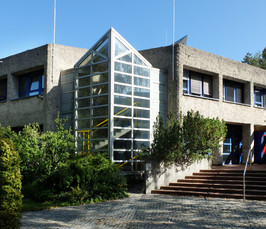Addressing the Surface Composition and Structure under Catalytic (T, p) Conditions
A Joint Seminar of the NOMAD Laboratory and of the Ma group
- Online Seminar
- Date: Jul 16, 2020
- Time: 10:15 AM (Local Time Germany)
- Speaker: Yuanyuan Zhou
- NOMAD Laboratory, Fritz Haber Institute of MPG, Berlin, Germany
- Location: Join the seminar: https://us02web.zoom.us/j/83905638107?pwd=RVRvYXF4Z00ybTVlM0tQc1RNUEpRZz09 | Webinar ID: 839 0563 8107 | Password: NOMAD
- Host: Christian Carbogno

However, in aiAT method the relative vibrational contributions between the substrate and adsorbate are often canceled out or treated at the (quasi-) harmonic level. The other approximation is the neglection of the configurational entropy. These approximation do not always yield accurate phase diagram, especially at high temperature and high coverage. In this presentation I will review a recently developed Replica-Exchange (RE) Grand-Canonical (GC) approach that enables the unbiased calculation of complete temperature-pressure phase diagrams of surfaces in reactive atmospheres including anharmonic effects. Moreover, the multi-canonical sampling within the given model Hamiltonian yields the quantitative calculation of phase boundary where high catalytic activity is expected, when post-processed with the multistate-Bennet-acceptance-ratio (MBAR) approach. Lastly, I will give a brief introduction of the international Center2Center, especially my future contribution to this project.
[1] Y. Zhou, M. Scheffler, L.M. Ghringhelli, Phys. Rev. B 100, 174106 (2019).
[2] M.R. Shirts, J.D. Chodera, J. Chem. Phys. 129, 124105 (2008).